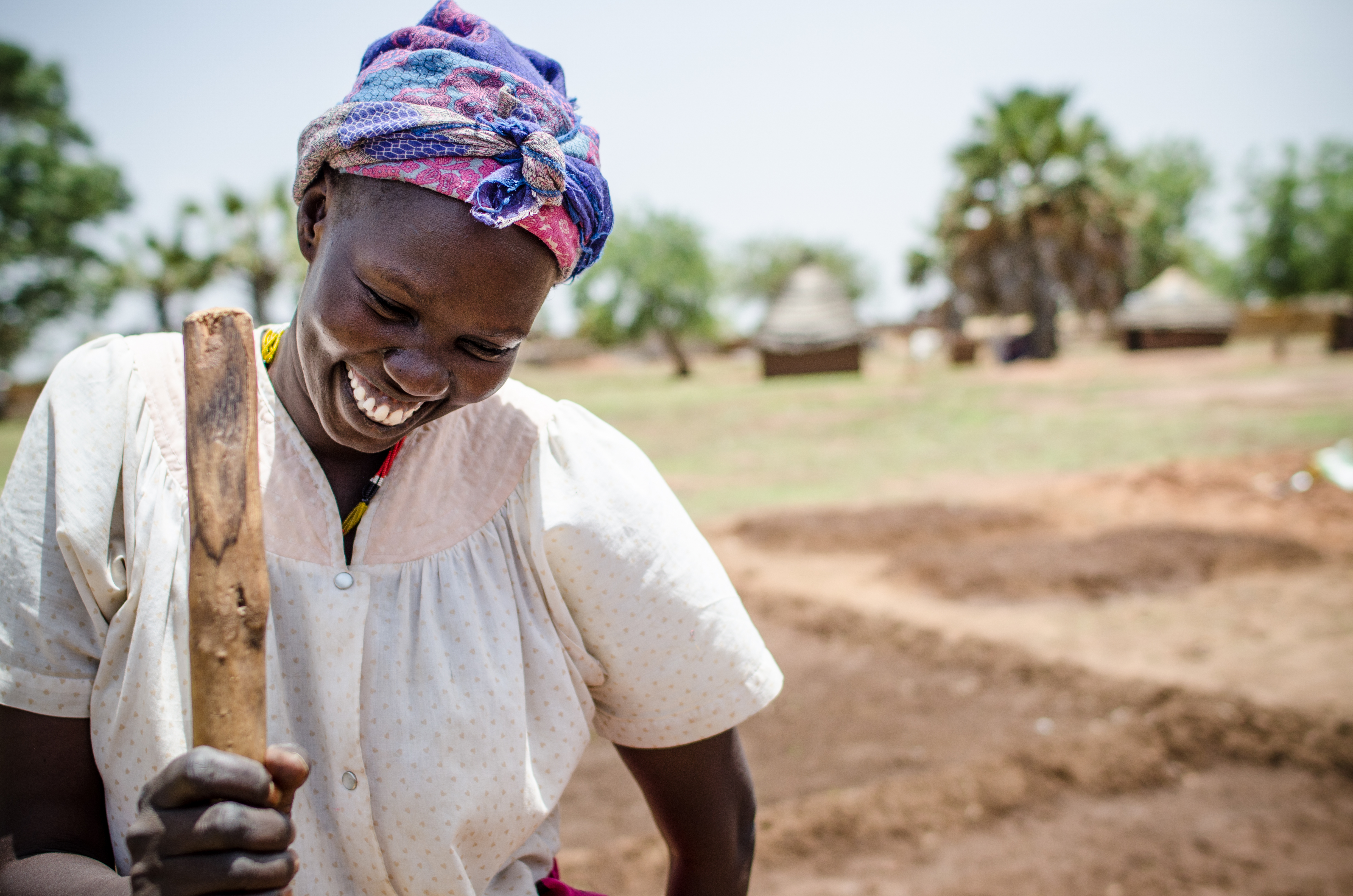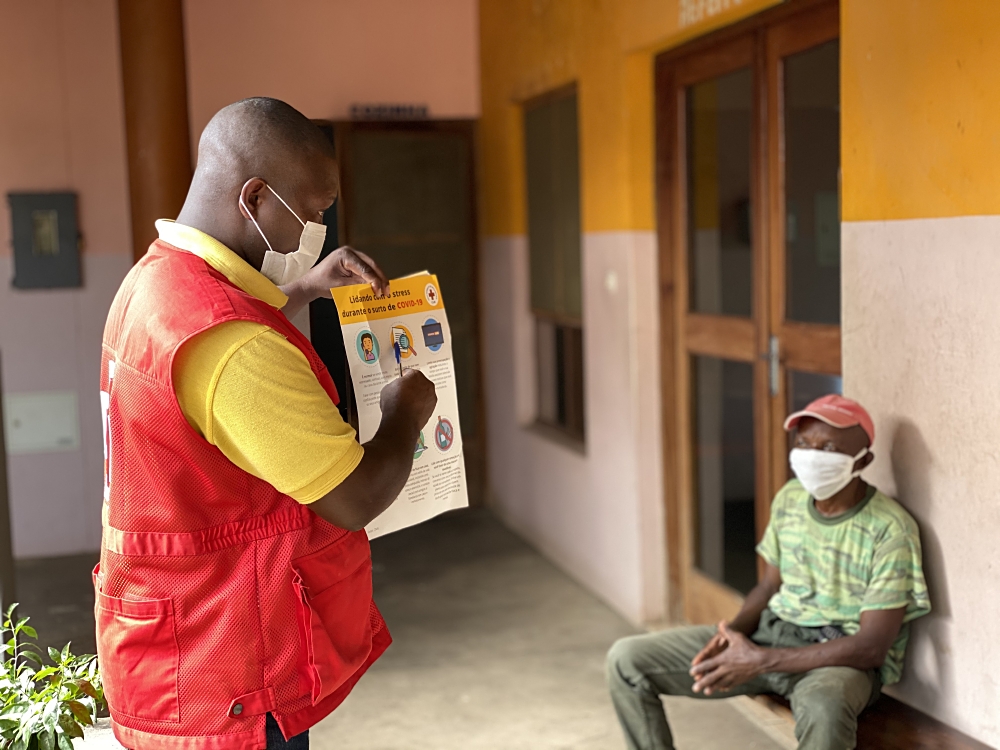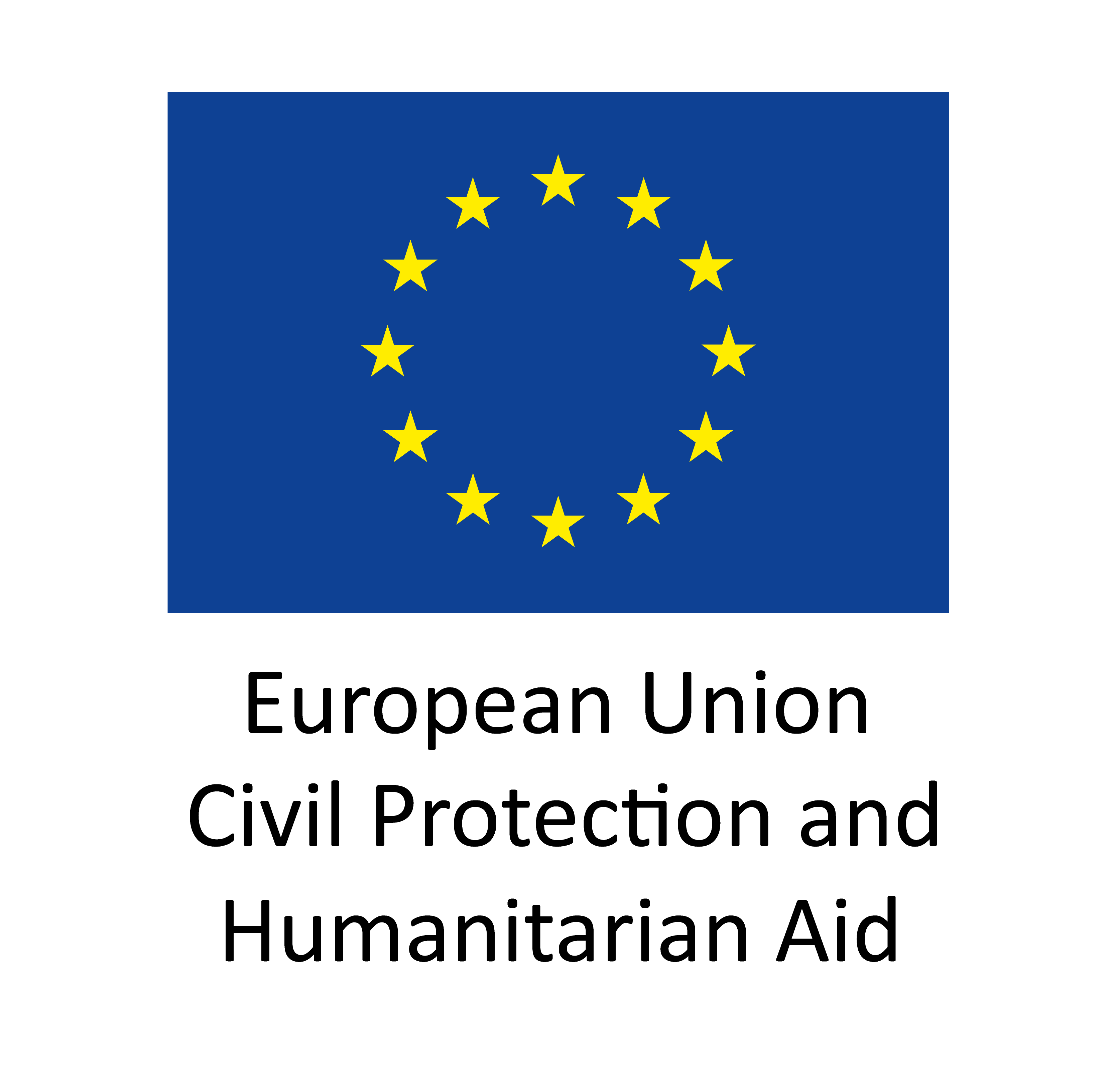This post is also available in: Español (Spanish) Français (French) العربية (Arabic)
The Grand Bargain
WORKSTREAM 2: LOCALISATION
More support and funding tools for local and national responders

Updates

This year’s Grand Bargain annual independent review analyses the progress achieved and challenges faced by signatories towards the commitments during 2022. >> Click here to read the full report
As of 2023, the Grand Bargain has taken on a new structure. Localisation remains as one of the focus areas for GB 3.0 along with quality funding and participation while a new set of focus areas: anticipatory action, nexus, and innovative financing has been added. In place of the Eminent Person, there will now be three thematic Ambassadors and the Localisation Workstream will also be replaced by a Community of Practice.
More information on the updated structure can be found here.
Our Videos and Webinars
Visit the Localisation Workstream YouTube channel to watch Workstream videos and those of external partners. If you have a video you would like to share, please contact us.
About the Grand Bargain & Localisation
About the Grand Bargain
What is the Grand Bargain?
The ‘Grand Bargain’ is an agreement between more than 50 of the biggest donors and aid providers worldwide. It aims to get more aid into the hands of people in need. It is essentially a ‘Grand Bargain on efficiency’ between donors and humanitarian organizations to reduce the costs and improve the effectiveness of humanitarian action.
The Grand Bargain includes a series of changes in the working practices of donors and aid organizations. These changes include increasing multi-year funding and harmonizing reporting requirements, improving transparency, reducing management costs, and increasing joint needs assessments. Signatories have also pledged to increase cash programming, strengthen the humanitarian-development nexus, promote greater participation of affected persons in decision-making and provide more support to national and local responders.
An important target of the localisation workstream is that 25% of global humanitarian funding is channeled as directly as possible to local and national responders by 2020. This is an important investment in the long-term institutional capacities of local actors, promotes more equal partnerships, and ensures better integration with local coordination mechanisms.
More information is available on the Grand Bargain webpage (hosted by the Inter-Agency Standing Committee).
The Grand Bargain 2.0, launched in 2021, goes even further and commits to prioritizing ‘greater support for the leadership, delivery and capacity of local responders and the participation of affected communities in addressing humanitarian needs. It called for a primary focus on localisation together with participation as one of the two enabling priorities. It also provides the development of ‘caucuses’ designed to encourage the personal engagement of the most senior level officials in small groups to overcome political bottlenecks and of country level processes, including ‘National Reference Groups’.
As of 2023, the Grand Bargain has taken on a new structure. Localisation remains as one of the focus areas for GB 3.0 along with quality funding and participation while a new set of focus areas: anticipatory action, nexus, and innovative financing has been added. In place of the Eminent Person, there will now be three thematic Ambassadors and the Localisation Workstream will also be replaced by a Community of Practice. More information on the updated structure can be found here.
The Grand Bargain's Commitments on Localisation
1. Increase and support multi-year investment in the institutional capacities of local and national responders, including preparedness, response and coordination capacities, especially in fragile contexts and where communities are vulnerable to armed conflicts, disasters, recurrent outbreaks and the effects of climate change. We should achieve this through collaboration with development partners and incorporate capacity strengthening in partnership agreements.
2. Understand better and work to remove or reduce barriers that prevent organisations and donors from partnering with local and national responders in order to lessen their administrative burden.
3. Support and complement national coordination mechanisms where they exist and include local and national responders in international coordination mechanisms as appropriate and in keeping with humanitarian principles.
4. Achieve by 2020 a global, aggregated target of at least 25% of humanitarian funding to local and national responders as directly as possible to improve outcomes for affected people and reduce transactional costs.
5. Develop, with the Inter-Agency Standing Committee (IASC), and apply a ‘localisation’ marker to measure direct and indirect funding to local and national responders.
6. Make greater use of funding tools which increase and improve assistance delivered by local and national responders, such as the UN-led country-based pooled funds (CBPF), IFRC Disaster Relief Emergency Fund (DREF) and NGO-led and other pooled funds.
The Localisation Workstream
The Localisation Workstream includes the signatories to the Grand Bargain (including UN and donor agencies, INGOs, representatives of the Red Cross and Red Crescent Movement) as well as an invited group of local actors. It is intended to build momentum and support for all signatories to meet their commitments on the localization of aid and humanitarian assistance.
A small group convenes regularly to develop joint projects and plans in order to share good practices, find ways to overcome barriers, develop tools and disseminate information. This group has developed a work plan for 2022-2023 to guide its efforts.
Public webinars and events are also organised periodically to bring more in more voices, share ideas and information. The International Federation of Red Cross and Red Crescent Societies (IFRC) and the Government of Switzerland currently serve as co-conveners of the Localisation Workstream.
Frequently Asked Questions
WHAT IS LOCALISATION OF AID?
There is no single definition of “localisation”. Under the Grand Bargain, the signatories have committed to “making principled humanitarian action as local as possible and as international as necessary,” while continuing to recognize the vital role of international actors, in particular in situations of armed conflict.
In a narrow sense, localisation can be seen as strengthening international investment and respect for the role of local actors, with the goal of reducing costs and increasing the reach of humanitarian action. In a broader sense, it can be viewed as a way of re-conceiving of the humanitarian sector from the bottom up. It recognizes that the overwhelming majority of humanitarian assistance is already provided by local actors.
WHY IS THERE A NEED FOR LOCALISATION?
Local responders are generally the first to respond to crises and often have access that international actors cannot achieve. They have a strong understanding of local circumstances, politics and culture. They are generally best placed to link response efforts to resilience building, preparedness, and recovery, because they are present before, during and after a crisis. Of course, international actors also have critical value to add, particularly around protection issues in complex settings, where local actors may be under greater threat from armed forces.
An effective and powerful international humanitarian ecosystem would invest both, in local and international capacities, according to their areas of comparative advantage. Currently, however, there is very little investment in local capacity and inconsistent support for local leadership and coordination mechanisms.
WHO IS A LOCAL ACTOR?
The Grand Bargain refers to “National and local responders comprising governments, communities, Red Cross and Red Crescent National Societies and local civil society.” With regard to measuring progress towards their financing goal, the Grand Bargain signatories agreed to the following definitions:
- Local and national non-state actors: “Organizations engaged in relief that are headquartered and operating in their own aid recipient country and which are not affiliated to an international NGO. (A local actor is not considered to be affiliated merely because it is part of a network, confederation or alliance wherein it maintains independent fundraising and governance systems.)”
- National and sub-national state actors: “State authorities of the affected aid recipient country engaged in relief, whether at the local or national level.”
ARE DIASPORA ORGANIZATIONS “LOCAL ACTORS”?
Diaspora organizations can play an important role in providing support for the humanitarian needs of persons affected by crises in their countries of origin. According to the definition mentioned above, Grand Bargain signatories do not currently measure any funds that they may provide to diaspora organizations as funding channeled directly to a local actor (since they are headquartered out of the country receiving the aid). However, in cases where government restrictions make it impossible for an organization to maintain its headquarters in the affected country, an exception to the agreed definition may well be appropriate.
HOW MUCH INTERNATIONAL HUMANITARIAN FINANCING DO LOCAL ACTORS CURRENTLY RECEIVE?
Comprehensive data on the amount of international financing channeled to local actors is still patchy. A recent estimate by Development Initiatives found that only 2.9% ($603 million) of international humanitarian funding in 2017 flowed directly to local actors, slightly up from 2% in 2016. Of these, only 0.4% ($85 million) was directed to civil society organizations. Funding that went through a single intermediary before reaching local actors represented a further 2.4%, and $128 million was allocated to local NGOs from UN-managed pooled funds (representing 30% of their disbursement).
WHAT DOES FUNDING “AS DIRECTLY AS POSSIBLE” MEAN?
Paragraph 2.4 of the Grand Bargain commits signatories to channel 25% of humanitarian funding “as directly as possible” to local actors. Negotiations over the meaning of this term have not produced a final definition. Instead, it was agreed that two categories of measurement would be used for the time being in relation to the notion of “direct as possible” and that the issue would be revisited when greater data was gathered. The two categories were: (1) funding to pooled funds that are available to local actors, and (2) funding that passes through only one intermediary before reaching a local actor.
IS LOCALISATION ONLY ABOUT HUMANITARIAN FINANCING?
No. In addition to the channeling of international humanitarian response funding, localisation is concerned with investment (both financial and technical) in the long-term institutional capacities of local responders, as well as with more equitable partnership arrangements and with greater integration of local and international coordination mechanisms. Localisation is about recognizing the already significant role of local responders (both governmental and non-governmental) and supporting them to develop and strengthen that role.
WHAT IS THE LOCALISATION WORKSTREAM DOING?
The Workstream has developed a work plan with activities related to (1) stronger engagement with local actors around the world, (2) country-level activities to highlight and promote progress, (3) developing shared guidance, and (4) improving measurement in financing local actors.
WHAT HAPPENED TO “THE LOCALISATION MARKER”?
Among the localisation commitments in the Grand Bargain is the intention to develop and apply a so-called “localisation marker”. In 2016-17, a sub-committee of the Inter-Agency Standing Committee Humanitarian Financing Task Team, called the Localisation Marker Working Group (LMWG) organized consultations on a potential marker. After significant discussions, the LMWG decided that a marker would not actually serve the stated purpose of measuring financing flows. They decided that these could be better addressed using existing mechanisms such as OCHA’s Financial Tracking Service and/or the International Aid Transparency Initiative.
Instead, the LMWG worked on definitions of key terms in the Grand Bargain in order to permit tracking, including what was meant by local and national responders and what the signatories meant in committed to channeling funding to them “as directly as possible” (as discussed above). After a series of discussions within the LMWG and then within the broader Workstream, a set of definitions and categories of measurement were agreed and are described here.
WHAT ARE THE “DEMONSTRATOR COUNTRIES”?
Grand Bargain signatories agreed to emphasize field level implementation, to invest in supporting implementation and to capture good practices from different countries. A decision was made that the Workstream would collectively visit three “demonstrator countries”: Bangladesh, Iraq and Nigeria. The demonstrator country missions took place in September (2018) November (2018) and April (2019) respectively.
IS GENDER RELEVANT TO THE GRAND BARGAIN’S LOCALISATION COMMITMENTS?
Yes. While gender is not expressly addressed in the text of the Grand Bargain, signatories have affirmed their interest in ensuring that it should be taken into account across all of the commitments. With regard to localisation, the need for support for local women’s organizations has been raised as an important issue.
Do you have a question not answered here? Click here to write to us or leave a comment below.
How to Get Involved
If your organization is a Grand Bargain signatory, you can designate a focal point to be a member of the Workstream.
If you are not a signatory but would like to share information, ideas, or opinions, or you have a question, you may send a message to coree.steadman@ifrc.org
Localisation Workstream Documents
Localisation Workstream Core Documents
- Localisation Workstream Workplan (January 2022-June 2023)
- Caucus on funding for localisation- Collective monitoring and accountability framework (2023)
- Grand Bargain Caucus on Quality Funding Outcome Document (2022)
- Caucus on the role of intermediaries Outcome Document (2022)
- Lessons learned from the Grand Bargain Caucus on Quality Funding and recommendations for the way forward (2022)
- Localisation Workstream Workplan 2020-21 (April 2020)
- Key definitions and categories of measurement (2020)
- Core Commitment Indicators and Target Results (CCTRI) (2019)
Localisation Workstream Reports
- Guidance Notes on Localization (2021)
- Co-Conveners’ Annual Report (2021)
- Workstream Planning Workshop September (2021)
- Leveraging Nexus Financing, June 2021 – Outcome Document (2021)
- Leveraging Investment Across the Nexus for Local Actors’ Capacity Strengthening – Summary Report (2020)
- Workstream 2 on Localisation: Potential of pooled funds for localisation (2020)
- Global Meeting on Localization (2020)
- Co-convenors’ Summary of Progress Report 2019 (2019)
- Final Mission Report – Nigeria (2019)
- Co-Conveners’ Summary of Self-Reports – Spanish Version (2019)
- TOR for Research on Country-Level Financing Solutions for Local Actors (2019)
- Demonstrator Country Mission Reports – Executive Summary (2018-2019)
- Final Mission Report – Iraq (2018)
- Final Mission Report – Bangladesh (Sep 2018)
- Co-Conveners’ Summary of Self-Reports (Jun 2018)
- Co-Conveners’ Summary of Workstream Progress Report (Oct 2017)
Localisation Workstream Workshop Reports
Localisation Workstream Meeting Minutes
- Localisation Workstream Teleconference –Sept 2020
- Localisation Workstream Teleconference – Oct 2019
- Localisation Workstream Teleconference – July 2019
- Localisation Workstream Teleconference – April 2019
- Localisation Workstream Teleconference – Feb 2019
- Localisation Workstream Teleconference – Dec 2018
- Localisation Workstream Teleconference – Oct 2018
- Localisation Workstream Extraordinary Teleconference – Sept 2018
- Localisation Workstream Teleconference -July 2018
- Localisation Workstream Teleconference – May 2018
- Localisation Workstream Teleconference – Mar 2018
- Localisation Workstream Teleconference – Nov 2017
- Localisation Workstream Teleconference – Sept 2017
Upcoming Events
This site is made possible thanks to support from the European Union and the Government of Switzerland.





